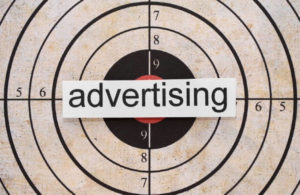Google is much more than a search engine. It is a vast online empire that spans billions of sites, searches, and video hours.
If you get on a health-kick for the New Year and search for powdered greens, superfood smoothies, and health supplements, you’ll start seeing ads for these products everywhere you look.
They’re at the top of search results, plastered across YouTube videos, and hosted on millions of websites.
It’s enough to make you reach for the tinfoil and start building a nuclear bunker.
But all of those ads are part of the vast Google Ads network. Your activity is tracked, your preferences are recorded, and advertisers pay Google for the ability to cyberstalk you.
It’s targeted advertising at its best, and as a business, it’s something you need to take advantage of.
The great thing about Google Ads is that it’s incredibly simple. Sure, there are marketing experts charging $100+ an hour to manage your ads and spend your money, but if you have the time to read this guide, run a few ads, and monitor your progress, you’ll be an expert before you know it.
Choosing Your Ad Type

The first step in creating an ad is to tell Google what you’re selling and where you want your ad to show. It’ll ask you whether you’re chasing leads, clicks, sales, or awareness, and then offer a number of options.
The 3 main areas to focus on are:
1. Search
Search Ads are text ads that appear on Google search results. They are shown above and below the organic results and are marked with an “Ad” prefix.
The majority of experienced search engine users skip these ads and go straight to the organic results, but that doesn’t matter, as you only pay when they click.
If you’re running Search Ads, you’ll need to write the headlines and descriptions. You’ll also be presented with options such as Alternative Headings and Sitelink Extensions, essentially giving you more control over how the ad appears.
2. Display
As of 2021, close to 40 million websites are signed up for Google AdSense. Webmasters place small pieces of code on their sites and this displays targeted ads to appropriate visitors.
Every time those visitors click the ads, the website earns money.
Google Ads is basically the reverse of this, as you’re the one paying and placing the ads. You can create text ads or upload images. The good news is that Google will pull images and text from your site to make this process easier, the bad news is that most ads created in this way will underperform.
3. Shopping
Every time you search for a retail product, such as “Organic Coffee” or “Herbal Tea”, Google shows a series of related products at the top or side of the search results. You’ll see titles, images, and prices, and if you click, you’ll be taken directly to the relevant product page on the advertiser’s site.
As an advertiser, you only pay when a user clicks a link, and as most of those users are actively looking to purchase, you’ll often get a high conversion rate.
Smart Shopping Ads are even better, as Google does most of the work for you and achieves some great conversion rates.
Which Ads are Best?

If you sell a product or service, you need Shopping Ads. Search and Display Ads are effective, but they often require more tweaking, more effort, and a much more flexible budget.
A user who searches for “Herbal Tea” and clicks a search ad, might be looking for information on the benefits of this product. In fact, unless you specifically tell it not to, Google will often show this ad to people who search for related terms such as “Benefits of Herbal Tea” and “Side Effects of Herbal Tea”, so you’re not necessarily targeting customers who are ready to buy.
The same is true for Display Ads, only your ads will follow those customers around and cost you money every time their curiosity is piqued.
Shopping Ads make it clear that you’re an e-commerce site selling a product. If you need information on the benefits of herbal tea, you don’t go to a retailer, you go to a blog; if you’re ready to buy after reading the blog, then you go to the retailer.
As a result, you’ll find that a greater percentage of users are ready to buy after clicking Shopping Ads, so these should always be your main focus.
What You Need to Know Before You Begin

Google Ads isn’t rocket science. It can be confusing at first, but the same is true for everything that you’ve never used before. Give it time, keep the 7 following tips in mind, and you’ll eventually be a pro:
1. Setup Conversion Metrics
For Google to properly track your sales and conversions, you will need to set up conversion tracking, and link both your Google Analytics account and Merchant Center account. It’s a pretty straightforward process and there are tutorials linked above to help you out.
2. Focus on Sellable Regions Only
Check your ad settings to make sure you’re targeting regions in which your products are actually available. You’ll also need to select “Ad Location Options” (Under Settings>Locations) and select “People in or Regularly In your Target Locations”.
Every time you create a new ad, it defaults to “People Interested in your Target Location”, which is great if you sell internationally and terrible if you don’t. I’ve seen state-specific companies unwittingly targeting shoppers in India and Australia and wondering why their conversions are low!
3. Mind Your Budget
Google asks you to set a daily budget, but it actually spends this budget monthly.
If you set a daily budget of $20, for instance, it may spend $30 one day knowing that it will compensate by spending just $10 the next. If you’re only planning to run your ads for a few days and have a limited budget, you’ll need to keep a close eye on those expenses.
4. Get Help from an Advisor
When you spend at least $10 a day, an event will trigger prompting you to schedule an appointment with a Google Ads Specialist. These experts are available completely free of charge and they are a massive help.
They will guide you through the basics and optimize your ads, which is very useful in those early stages.
If $10 is too much, find a niche keyword that gets only a handful of monthly searches, set the click bid to less than $0.50, and increase the budget to $10. That should be enough to trigger the event without actually increasing your budget, although it may not happen immediately.
5. Look for Coupons
All new Google Ads customers are offered coupons. These are everywhere and they are usually quite generous, offering up to $100 on average.
Run a Google search to find one and if that doesn’t work, sign up for Google Ads and refrain from making a deposit. You should get an email within a couple of weeks offering you a coupon if you deposit and spend.
6. Change the Keywords
If you’re running Search and Shopping campaigns, you’ll need to monitor your keywords. Open the campaign and click “Keywords” in the sidebar. It will show you which keywords you’re using and whether or not they are effective.
From here, you need to find the ones that are not relevant (and there will be many) and click “Add as Negative Keyword”. You should do the same for keywords that are costing a lot of money without generating sales.
This is something you’ll need to do on a regular basis.
7. Be Patient and Keep Tweaking
You might not see results straight away, and if you do, they might not stay that way. But it’s important to remain patient, let Google learn about your customers, and keep making minor adjustments along the way.
If your Shopping Ads are getting dozens of clicks without generating sales, or your cost per conversion is higher than your actual sale price, you’ll need to make some tweaks. Change the image, adjust the price, and reduce your bid.
If your Search and Display Ads aren’t working but your Shopping Ads are doing great, pause the ineffective campaigns and pump more budget into the effective ones.
Pro Tip: Focus On Customer Reviews
Be sure not to neglect getting reviews from your customers. Why is this crucial? Because research continues to show consumers scroll to the reviews before looking at the price or making a purchase. Here’s an informative article that shines a bright light on the importance of customer reviews: Jeremy McGilvrey’s Reviews Prove He’s Obsessed with His Clients’ Success
Conclusion: Using Google Ads for Beginners
Just because some people charge thousands of dollars to manage Google Ads accounts, doesn’t mean you can’t do it yourself. Small businesses can’t afford those big-budget ad agencies, and if you have a little time and commit to learning and improving, you don’t need them!
This is a Contributor Post. Opinions expressed here are opinions of the Contributor. Influencive does not endorse or review brands mentioned; does not and cannot investigate relationships with brands, products, and people mentioned and is up to the Contributor to disclose. Contributors, amongst other accounts and articles may be professional fee-based.

